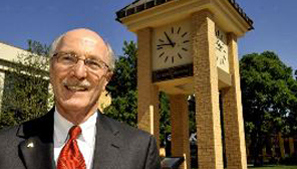Beth Duke is a longtime friend of mine; I’ve known her since January 1995 when I first moved to Amarillo, Texas, to become editorial page editor of the Amarillo Globe-News, where she was serving as features editor and later as city editor.
Thus, I feel safe in saying that Duke is doing what she now is getting paid to do: She is talking ever so positively about the prospects for the city’s downtown business and entertainment district. As director of Center City, that’s her job.
There. Having said that, I totally agree with her assessment that 2019 is shaping up as a potentially Earth-shattering year for the city’s downtown district, as work continues full throttle on projects aimed at injecting new life into the district.
I no longer live in Amarillo, but my interest in the progression of the city’s downtown rebirth hasn’t abated in the least. I am delighted at what I see happening there and to be candid, Duke and her organization have played a significant role in that effort.
According to the Globe-News: “Last year, 2018, was a great year for Center City with the construction of the MPEV (multipurpose event venue),” Duke said. “People can finally see what venue is a catalyst project.”
The Amarillo Sod Poodles, the city’s new AA minor league baseball team, opens its Texas League season in early April. My hunch is that the ballpark under construction on Buchanan Street will be full on opening day. The “catalyst” hopefully will ignite lots of related activity downtown and, thus, boost the city’s image, fatten its wallet with sales tax revenue and provide the city with additional resources to develop other parts of the city.
Businesses are slated to begin filling the ground-floor storefronts at the parking garage that was erected across the street from the MPEV. Work has begun on the Barfield Building, turning that rotting structure into a Marriott hotel. It will join the Courtyards by Marriott at the Historic Fisk Building as a place that has breathed new life into a historic structure. The Embassy Suites hotel across from the Civic Center is attracting conventions.
Polk Street is coming back to life. Potter County’s refurbished courthouse is a thing of beauty and the county now is beginning to discuss openly options related to replacing the Courts Building.
Yes, I hear about some of the grumbling from those who want the city to invest in other neighborhoods and quit concentrating on downtown. I am empathetic to their concerns. My hope today is that City Hall is listening.
However, none of that should disparage the progress that’s been made downtown. My mantra remains the same as it always has been: Show me a city on the move and I am virtually certain that the city possesses a vital downtown district.
Amarillo clearly is on the move. Its downtown business district is setting the pace.




